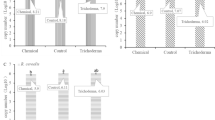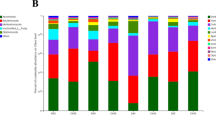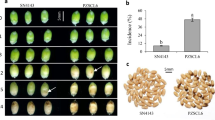Abstract
EYESPOT of wheat caused by Cercosporella herpotrichoides is widespread in East Anglia, where it causes considerable loss in yield1. Typical symptoms of the disease are oval brown-bordered lesions on the straws near soil level. Similar, but less regular, lesions caused by another fungus have been recognized at Rothamsted as a different disease since 1935. This was described in Holland and figured by Oort2, who called it sharp eyespot but did not identify the causal organism. Sprague3,4 found a Rhizoctonia causing similar symptoms on wheat in Oregon. Blair5, working with Rhizoctonia Solani, found that some Canadian strains when inoculated into wheat caused a stem girdling injury the photographs of which resemble those of sharp eyespot. Neither worker identified the lesions caused by Rhizoctonia as the sharp eyespot described by Oort.
This is a preview of subscription content, access via your institution
Access options
Subscribe to this journal
Receive 51 print issues and online access
$199.00 per year
only $3.90 per issue
Buy this article
- Purchase on SpringerLink
- Instant access to full article PDF
Prices may be subject to local taxes which are calculated during checkout
Similar content being viewed by others
References
Glynne, Mary D., Ann. Appl. Biol., 29, 254 (1942).
Oort, A. J. P., Tidsch. over Plantenziekten., 42, 179 (1936).
Sprague, R., Phytopath., 24, 946 (1934).
Sprague, R., Phytapath., 27, 798 (1937).
Blair, I. D., Canad. J. Res., C, 20, 174 (1942).
Author information
Authors and Affiliations
Rights and permissions
About this article
Cite this article
GLYNNE, M., RITCHIE, W. Sharp Eyespot of Wheat caused by Corticium (Rhizoctonia) Solani. Nature 152, 161 (1943). https://doi.org/10.1038/152161a0
Issue date:
DOI: https://doi.org/10.1038/152161a0
This article is cited by
-
Variation of rDNA Internal Transcribed Spacer Sequences in Rhizoctonia cerealis
Current Microbiology (2017)
-
Rootrots of cereals. II
The Botanical Review (1953)
-
Sharp Eyespot as a Severe Disease of Oats
Nature (1950)



